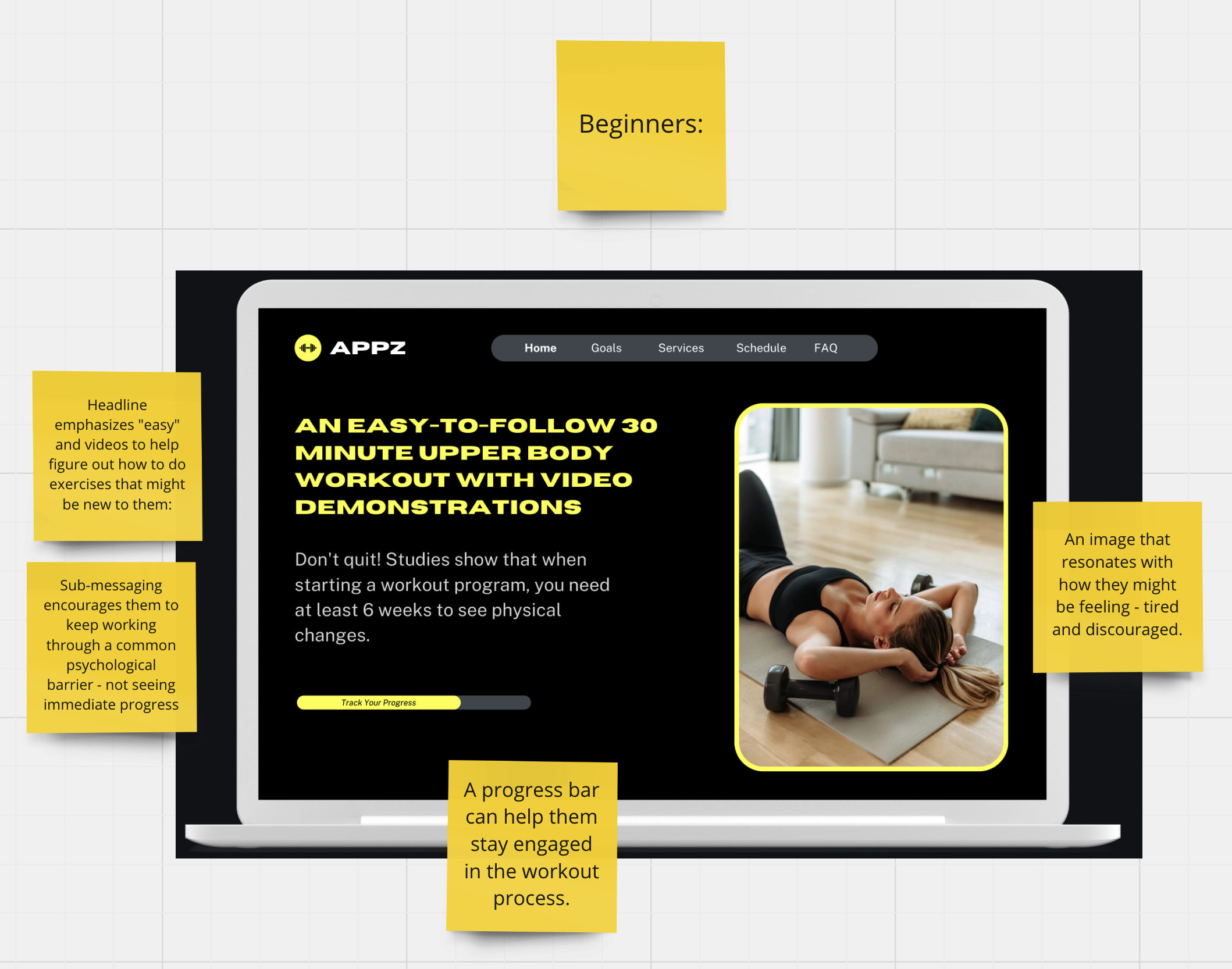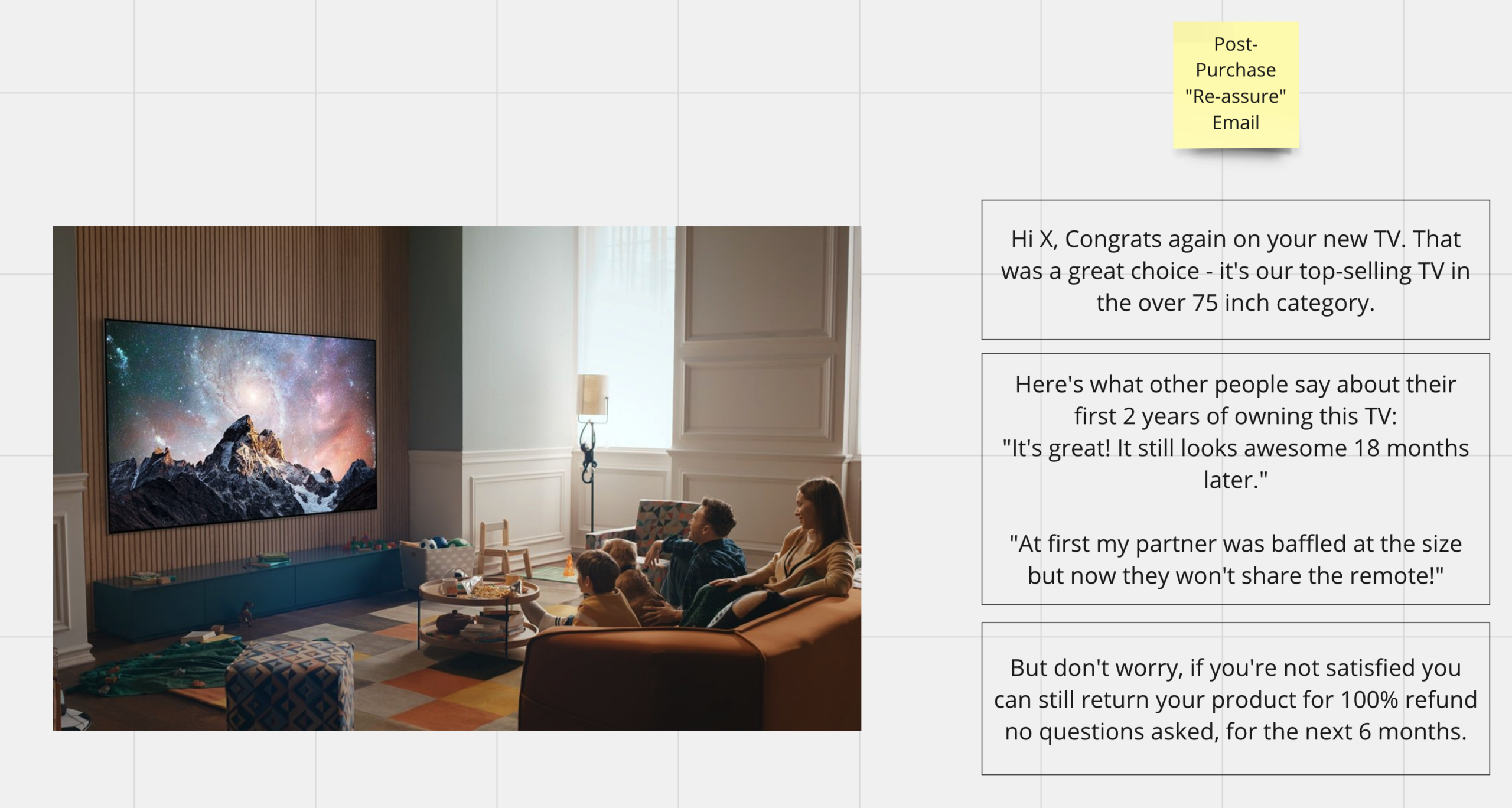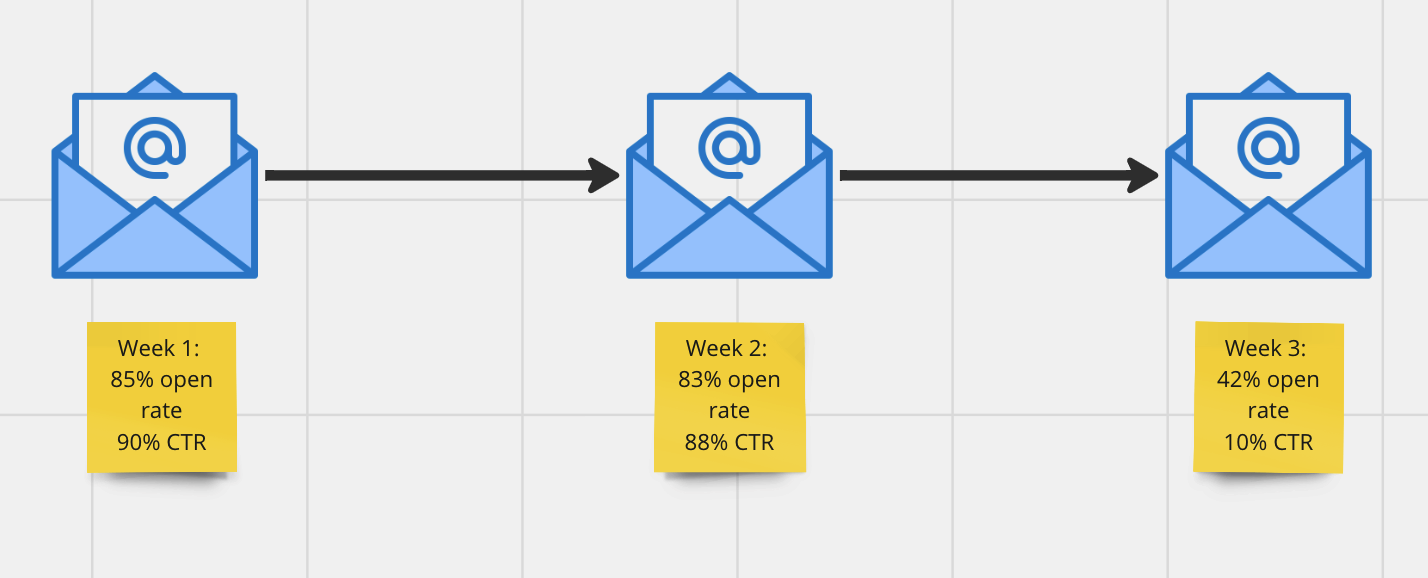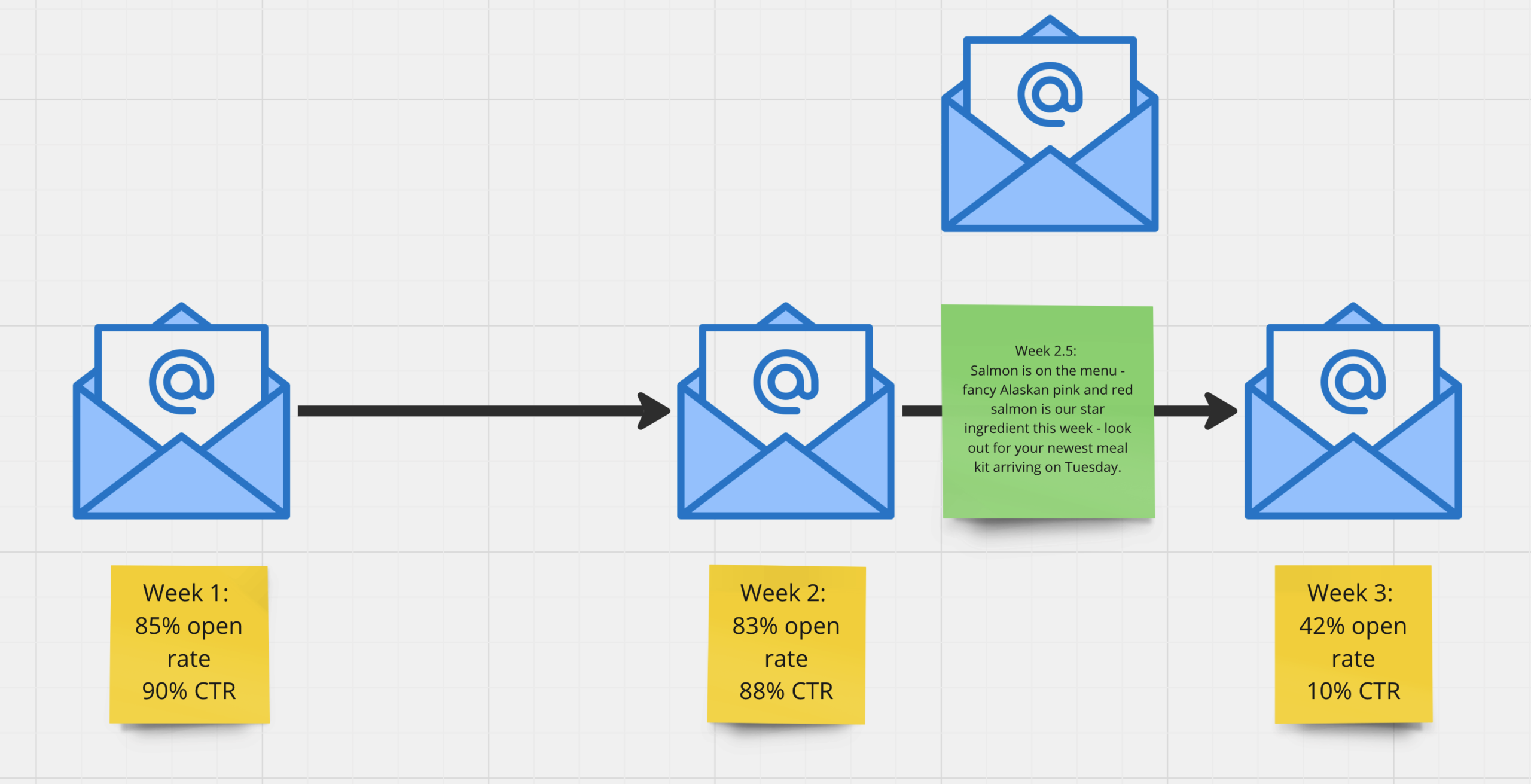Table of Contents:
- What Are Customer Journey Maps & Why Are They Important?
- 5 Ways Customer Journey Maps Help You Create Powerful Marketing Messages
- Understand Your Buyer’s Deepest Desires, Needs, Goals and Challenges
- Create an Emotional Connection With Customers
- Find Moments To Ramp Up Positive Emotions
- Identify Powerful Moments for Engagement
- Personalize Messages so They Resonate With Customers
- The Bottom Line: Why Customer Journey Maps Are So Powerful For Messaging
What are Customer Journey Maps?
Customer Journey Maps are a visual story about how people interact with your brand. They help companies gain a deep understanding of their customers and act as a bridge between the business and its buyers.
In a single illustration, the journey map aims to capture the entire customer experience - and that can be a pretty tough job.
Done well, they empower people to work cross-functionally and iron out all of your customer experience issues. They serve as long-term assets that can guide your brand for the next 2–3 years. Customer Journey Maps can kickstart radical change in your company, including:
- Ideas for new products
- Fuel to cancel underperforming products, touchpoints, and marketing messages
- More effective marketing messages and channels
- Better and more helpful customer service
- Changes to your business model, like shutting down stores to focus on eCommerce, for example
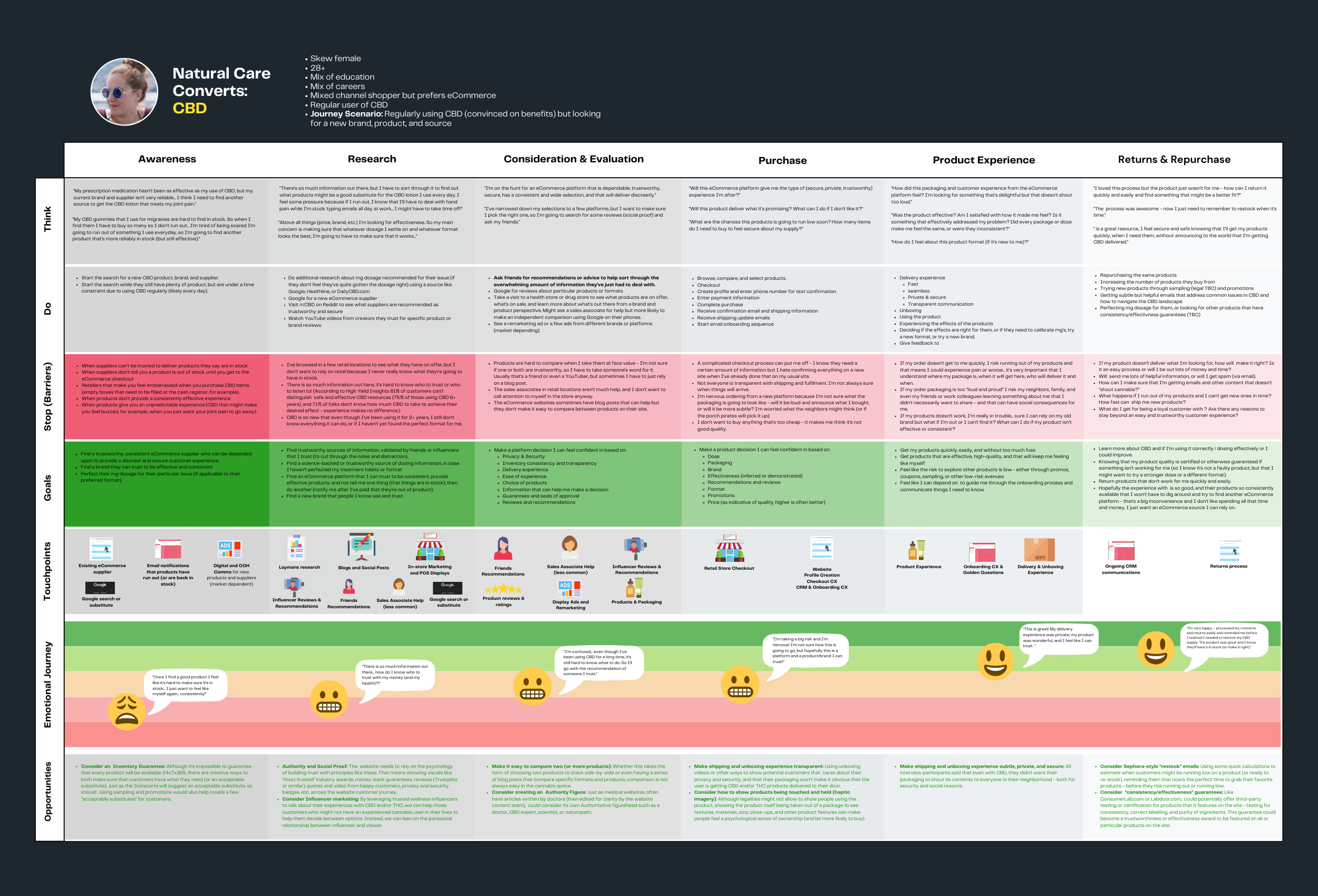
International Copyright Choice Hacking Ltd; Replication or repurposing of this image is prohibited without express permission of Choice Hacking Ltd.
Journey Maps are a great place to start if you want to better understand your buyers and your business, dig into ways to improve your clients' business, or kickstart a transformation or change in your organization.
5 Ways Customer Journey Maps Help You Create Powerful Marketing Messages
Prefer to watch? Check out the YouTube video below:
1. Understand Your Buyer’s Deepest Desires, Needs, Goals and Challenges
By mapping the customer journey, companies can spot unique buyer or user groups and their needs, preferences, and behaviors at different stages of the journey. Once you understand who your customers are and what they desire, you can develop different messaging for each group.
Psychology and Behavioral Science principles like the Self-Reference Effect and the Cocktail Party Effect (as well as independent testing) tell us that these types of messages will better engage and convert customers.
Here's an example of how this could be applied with a fitness app.
The marketing department starts the process of Journey Mapping and discovers through behavioral data analysis that they have two main customer groups: beginners looking for guidance and experienced users seeking advanced workouts.
To innovate its messaging, the company starts creating and sending users personalized workout plans and motivational messages tailored to each segment's needs, using language and content that resonate with their fitness level. For example:
- Beginners:
- Workout: An Easy-to-Follow 30 Minute Upper Body Workout with Video Demonstrations
- Messages: Don't quit! Studies show that when starting a workout program, you need at least 6 weeks to see physical changes.
- Advanced:
- Workout: A 45-Minute Upper Body Workout to Blast Your Traps & Bi's
- Messages: We know lifting can feel boring after a few years of doing the same exercises over and over. That's why we work with exercise scientists to discover the latest breakthroughs in performance science and creating cutting-edge workout plans.
2. Create an Emotional Connection With Customers
By highlighting the emotional highs and lows of a customer journey, brands can craft messages that empathize with the customer's experience. For example, acknowledging the frustration of waiting for a delayed order and offering a sincere apology can build trust and loyalty. Or recognizing and celebrating customer milestones (e.g., one year since their first purchase) with personalized messages can help customers feel good about doing business with you.
Here's two examples of brands that used Customer Journey Maps to create emotional connections with customers:
- Soothe customers' nerves after a big purchase. After a large electronic retailer used Customer Journey Mapping to discover that customers feel anxious before and after making large purchases like a flat screen TV, they started sending a post-purchase message reassuring the customer about their decision, sharing testimonials from happy long-term owners of the TV, highlighting the product's benefits, warranty, and easy return policy. This provided a bit of confirmation that customer had made an excellent choice, and helped calm any post-purchase dissonance they might be feeling (aka buyer's remorse).
- Celebrate important customer milestones: After creating a Customer Journey Map and discovering customers viewed them as a low-cost, transactional brand, a pet supplies store wanted to boost buyer engagement. It now tracks the purchase date of pet food and sends a personalized message on the anniversary of a customer's first purchase, celebrating the "birthday" of their relationship with the store. The warm, personalized message includes a discount code for their next purchase, increasing the chances they'll become regular visitors and think of the brand more fondly when it does.
3. Find Moments To Ramp Up Positive Emotions
When you double-down on positive customer emotions, you can make a good moment or memory even better. Here's an example of how a brand could identify and augment these positive emotional moments.
- An online retailer that specializes in personalized shopping experiences uses customer journey mapping to spot key moments when customers feel particularly positive about their service - they find that when customers get their personalized outfit recommendations, people are excited and can't wait to open their email and check the recommendation. To amplify this positive emotion, the retailer introduces an "Outfit of the Day" feature, where customers receive daily personalized outfit suggestions. This feature uses customer data to curate outfits that match their style and preferences, considering factors like weather and upcoming events in their calendar to make these recommendations even more personalized.
4. Identify Powerful Moments for Engagement
The process of Customer Journey Mapping can reveal less obvious moments of customer frustration or happiness. Your brand's messaging and touchpoint strategy can address these moments, like sending a proactive message offering help when a customer is likely to experience a problem.
Here's how a subscription-based meal kit service could use this approach:
- When laying engagement data against the phases of their Customer Journey Map, this brand spots a big drop in engagement after customers gets their third meal kit. To address this, the brand introduces a surprise "gourmet" ingredient in the third kit and sends a message teasing the surprise to reinvigorate interest and keep customers engaged (increasing customer lifetime value in the process).
Before:
After:
5. Fulfill Psychological Needs Customers Didn't Know They Had
The data collected through journey mapping can inspire creative messaging that resonates more deeply with customers. For example, if data shows that customers feel excited at a certain point in their journey, companies can craft messages that amplify this excitement, using vibrant images or uplifting language.
Here's how an omnichannel retailer could use this approach:
- A regional bookstore chain uses journey mapping combined with Psychology and Behavioral Science approaches to discover that customers feel a sense of achievement when they complete a book. The bookstore sends a congratulatory text or email message 24 hours after customers submit an online review for a book they bought in-store and used their loyalty card to earn points on. The brand suggests a new book based on their reading history, and includes a creative, personalized digital "certificate of completion" for the book they just finished.
The Bottom Line: Why Journey Maps Are So Powerful For Messaging
Customer Journey Maps aren't just pretty pictures. They're powerful business tools that narratives that unveil the conversation happening between a brand and its customers - consciously or not.
These tools are invaluable to any brand who wants to bridge the psychological (and physical) gaps between themselves and their buyers. Their benefits don't stop at more effective marketing messages - they can help you find moments to cross-sell and up-sell, innovate your products, increase loyalty and retention, create content that resonates, and even price more effectively.
If you want to do any (or all) of these things to grow your business, start with a customer journey map.
Get Free Journey Mapping Resources👇
- Sign up to attend a free 60-minute workshop on April 19th, where we'll work together to build a Customer Journey Map.
- Download "From Behavior to Business Growth: An Introduction to Behavioral Personas"
- Swipe files & Analysis of 20 Customer Journey Maps: Use this free download to gather ideas and inspiration for the format and design of your customer journey map (a very important part of the process).
- Explosive Growth: 10 Ways Journey Maps Can Boost Your Business
- Get a free Customer Journey Map template here.
Keep Learning:
- 3 Ways to Apply Behavioral Science to Customer Journey Maps
- 6 Essential Parts of a Customer Journey Map
- Customer Experience Measurement: How to use metrics in your customer journey map
Learn Journey Mapping the easy way:
- Register interest for one of my most popular courses, "How to Create Magnificent Journey Maps."


